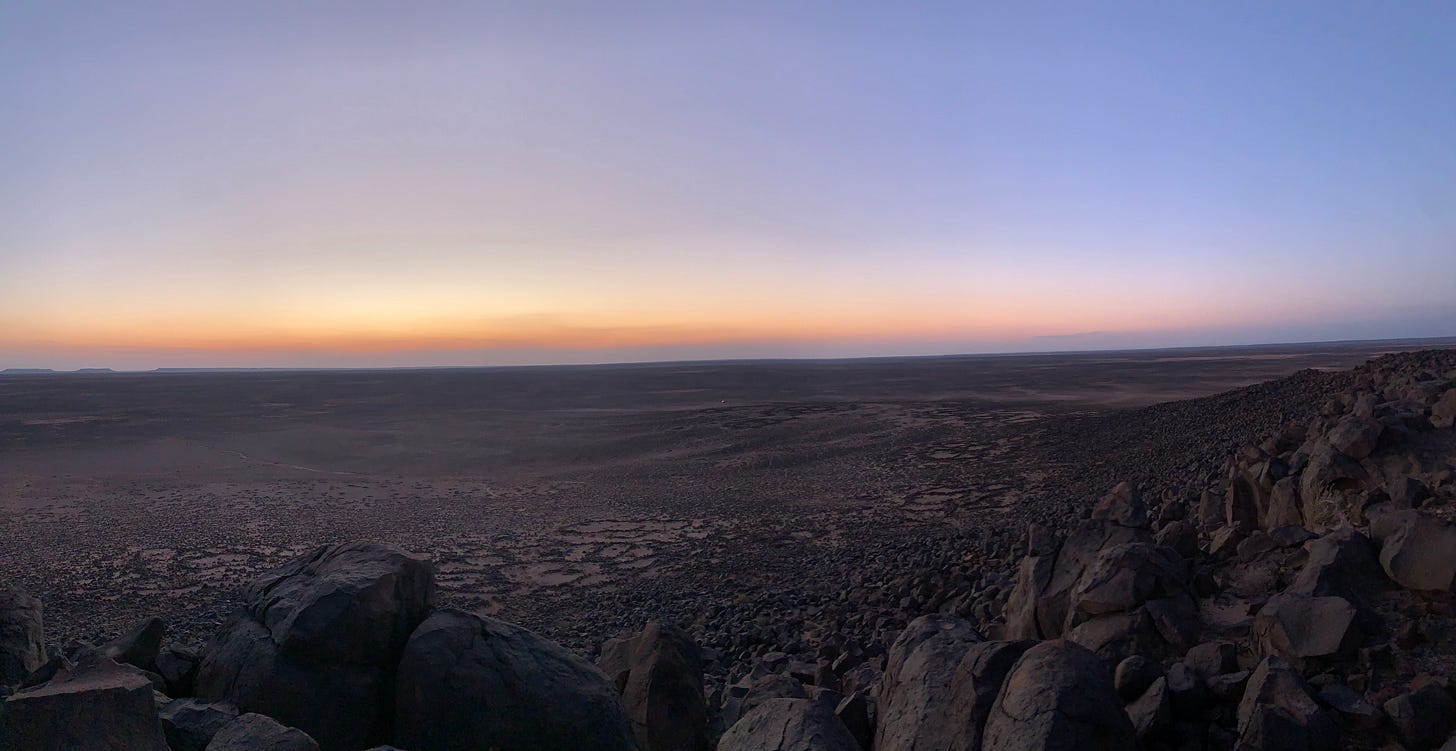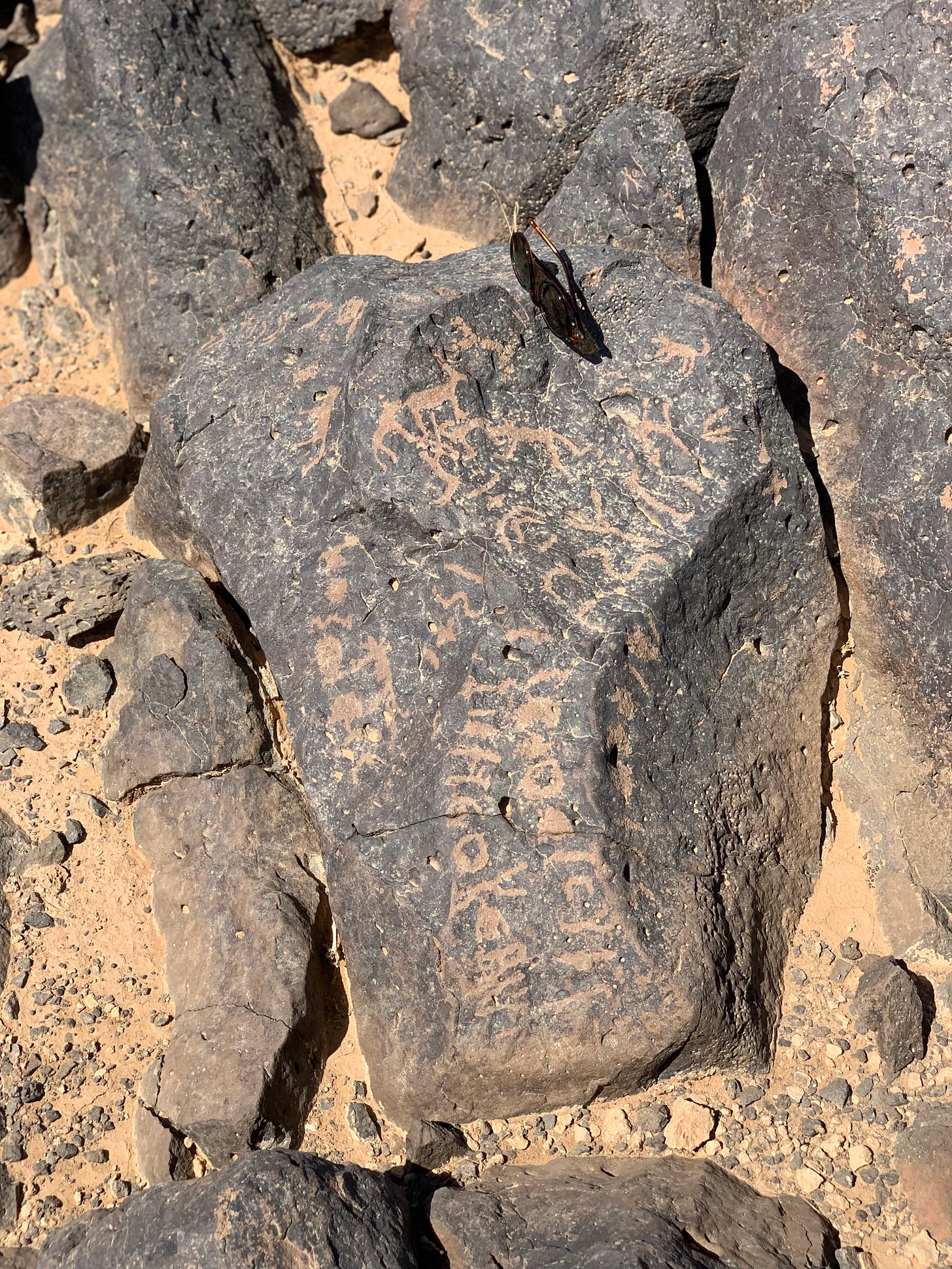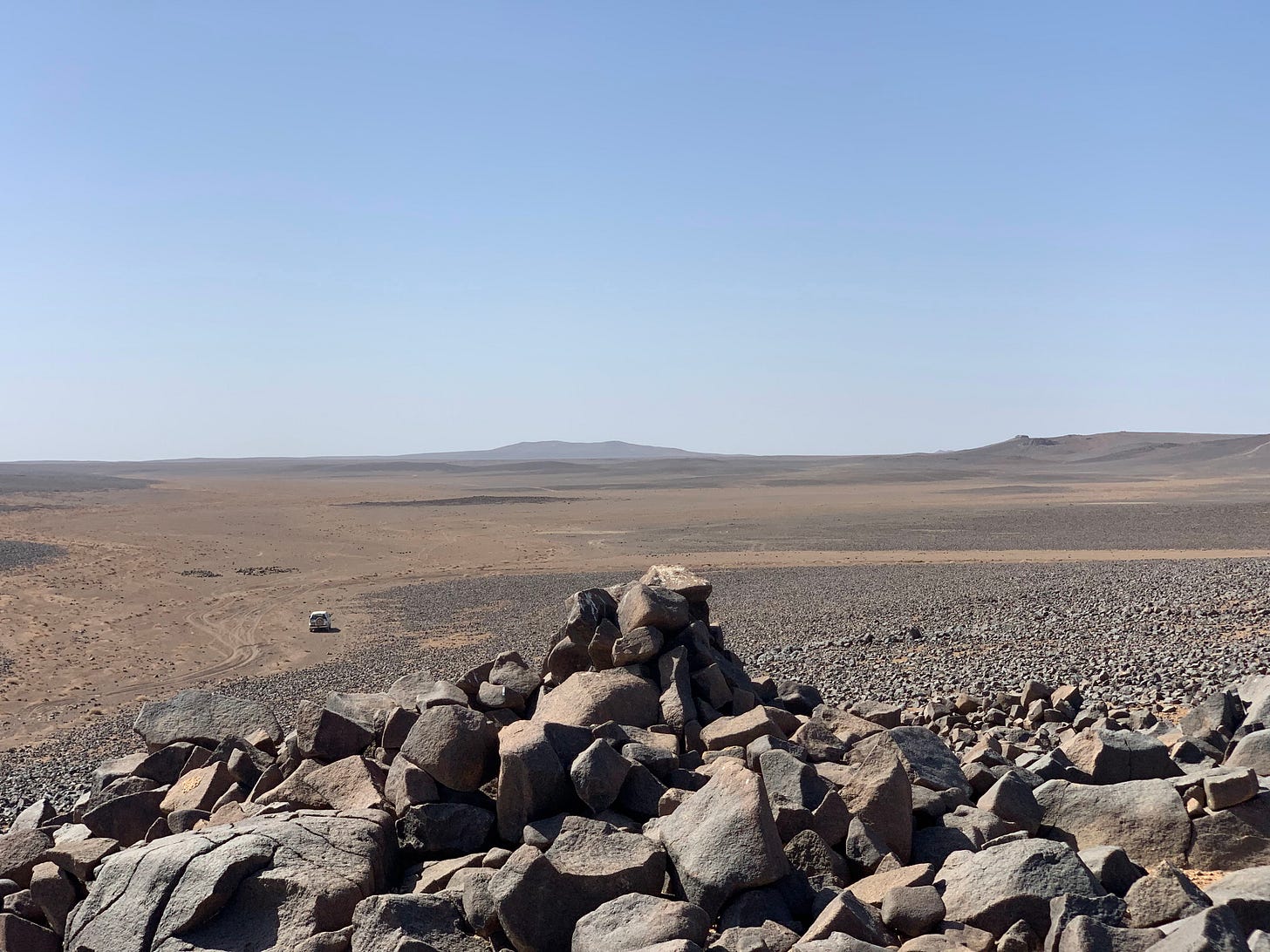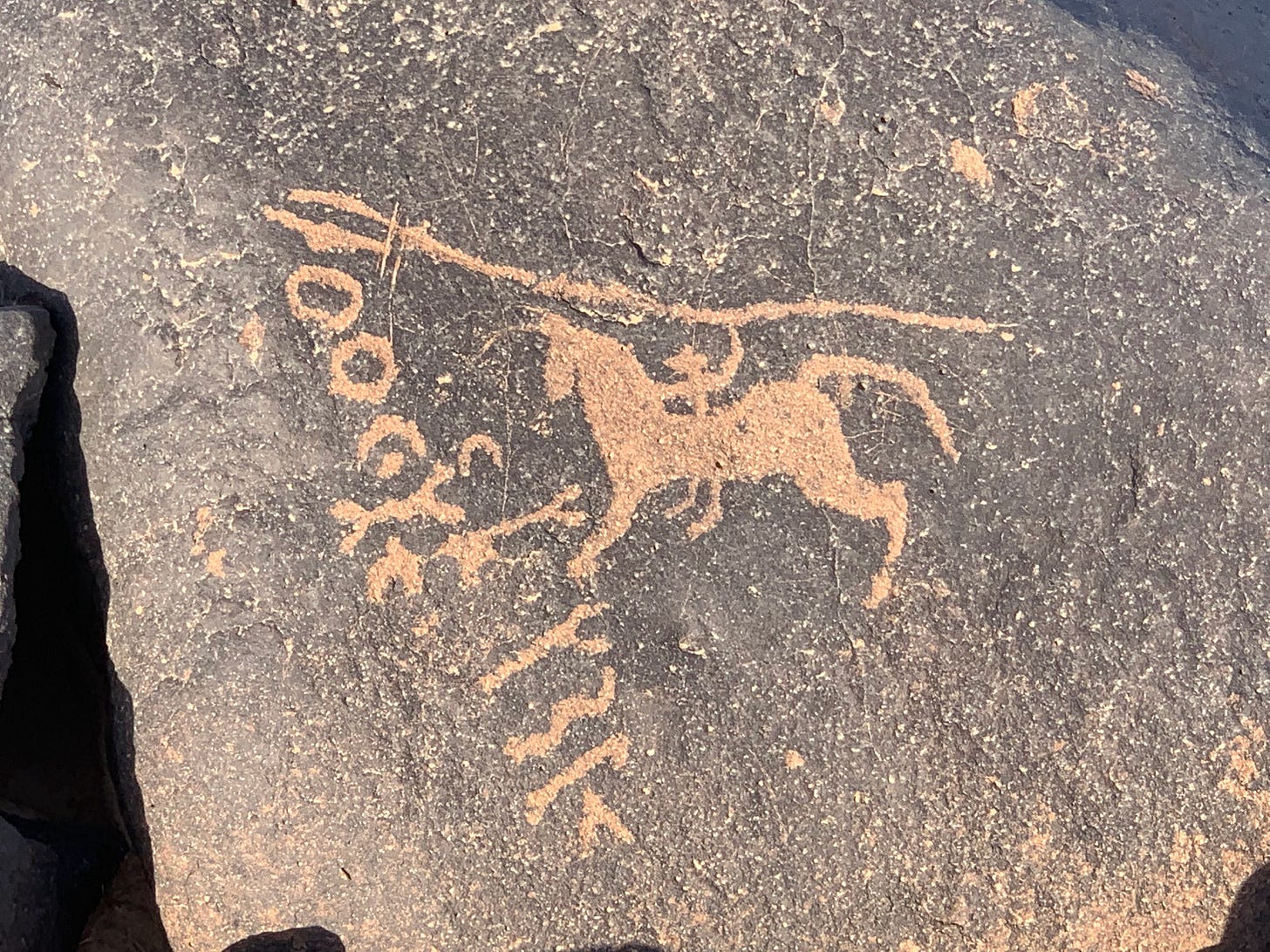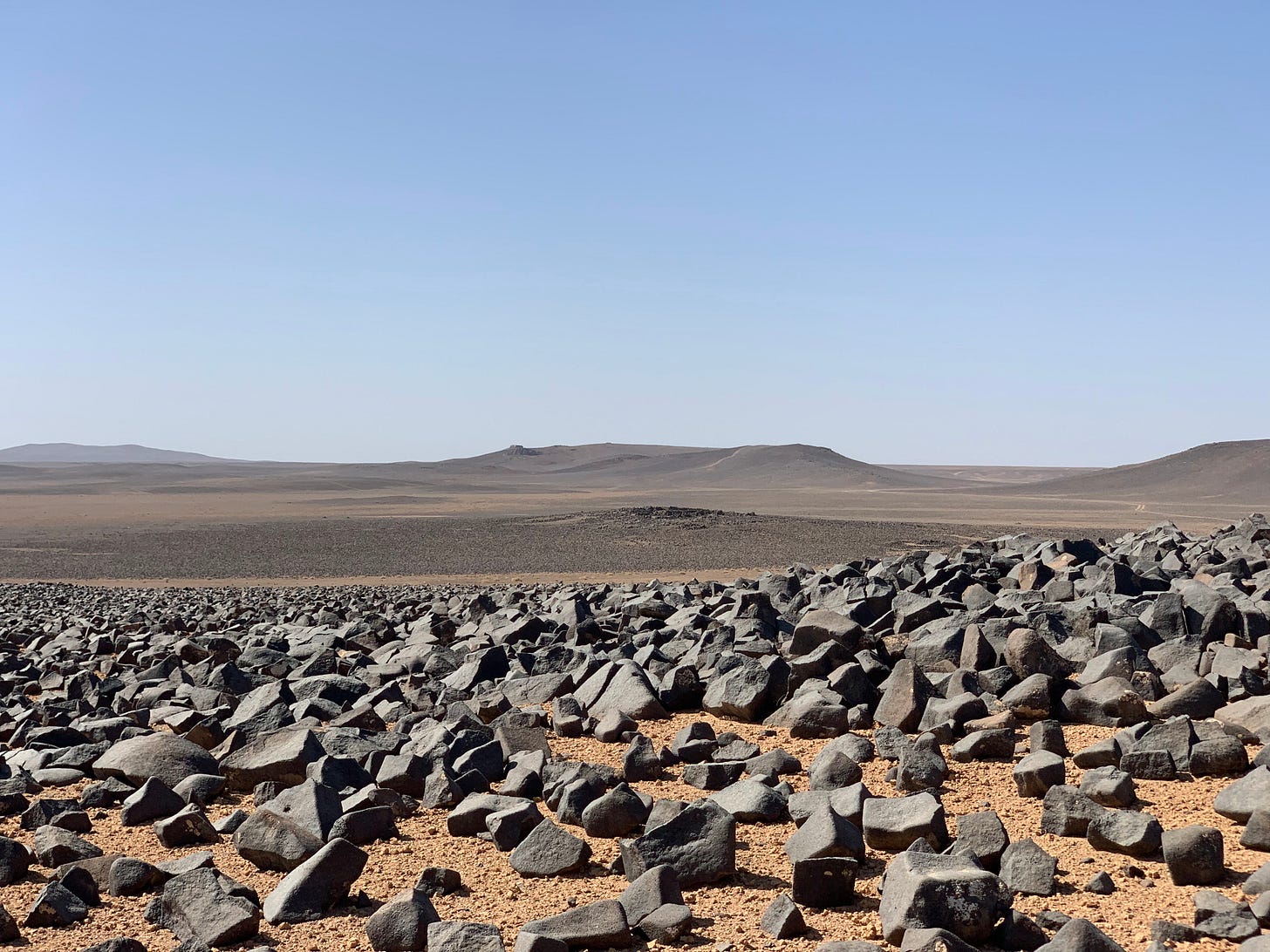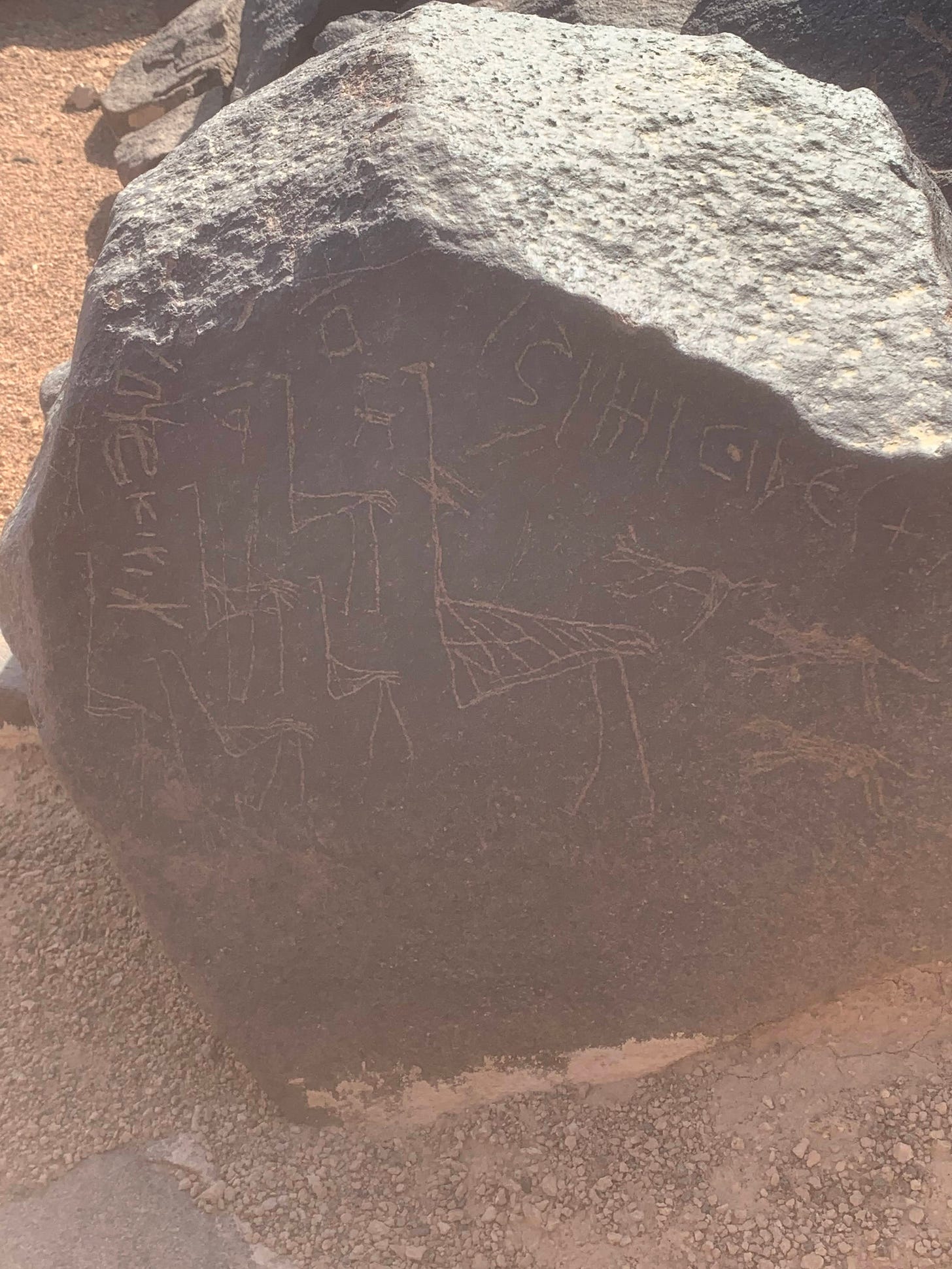The Arab's Ancient Cousins (6)
Far in the Syrian, Jordanian, and Saudi remote landscapes lay a virtually untapped library written on the region's billions of volcanic rocks
Over 2000 years ago, the ancient ancestors of the Arabs in the Middle East - the Safaitic-speaking communities - were traversing the vast arid landscapes stretching from Syria to Saudi Arabia. Uniquely, these nomadic communities were quite literate. In fact, they wrote on literally most rocks and geological features they could find, with a particular interest in rocks and cliff faces. Today, we can still read and learn more about the complexity, beauty, and peculiarity of these mysterious communities.
Here are five facts about safaitic:
Safaitic is an ancient written script dialect of Arabic, which, when read aloud some is largely intelligible to fluent Arabic speakers.
Safaitic evolved in the Al-Harra region, a desert consisting billions of large balastic volcanic rock, and became the “lingua franca” one of the principle languages of the Nabataeon empire, which stretched from modern Jordan to Saudi Arabia.
Most Safaitic inscriptions are often carved into large volcanic rocks in areas of religious, cultural, and social importance—such as hunting kites, graves, and high places.
As many as 40,000 Northern Arabian inscriptions have been documented, but tens of thousands more have yet to be found, surveyed, and documented. Meanwhile, ongoing ongoing conflict, drug trafficking, and instability along the Jordan-Syrian border has complicated to reach the many areas along the border.
Safaitic inscriptions have unlocked a wealth of new knowledge on the ecology and wildelife of the region, which included numerous animal species ranging from large cats, hyenas, ibyx, oryx, ostrige, foxes, and more. Furthermore, the numerous written texts gleamed from the rock faces shed light on the life and culture of the peoples’ who carved them. And, in rare cases, these inscriptions raise key questions on major events and individuals of significance known in the region, most notably regional perceptions of Jesus.
© Coffee in the Desert, by Jesse Marks





